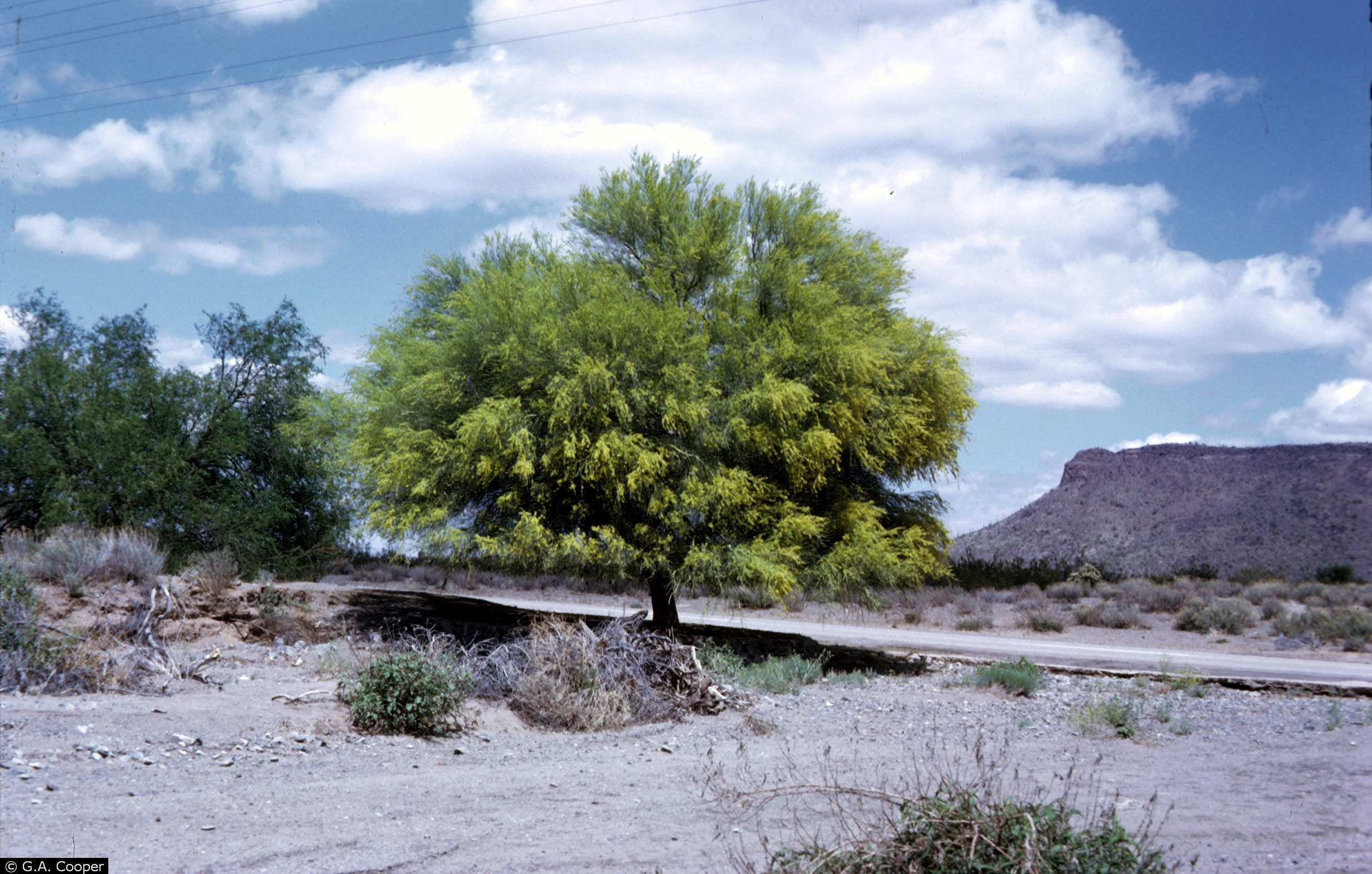Palo Verde tree; photo © G.A. Cooper, hosted by the USDA-NRCS PLANTS Database (all rights reserved; used by permission).
Official State Tree of Arizona
Palo verde was designated the official state tree of Arizona in 1954 (legislation specified genera cercidium, but the genus cercidium has been updated to Parkinsonia). All State Trees
"Palo verde" is Spanish for "green stick." Two species of palo verde trees are native to the Sonoran Desert in Arizona; Parkinsonia florida (commonly called blue palo verde) and Parkinsonia microphylla (called yellow palo verde). Blooming in the spring (beginning in late March and continuing until May), palo verde are beautiful trees that add vibrant color to the Arizona desert. Palo verde seeds were a food source for native Americans (the Pima and Tohono O'odham tribes of Arizona); the seeds were dried and ground with mortars to make a flour used for mush or cakes.
Palo verde is a relatively small tree that reaches a height of approximately 32 feet and a trunk diameter of 1.5 - 2 feet. This tree has a deep root system which allows it to tap into the ground water and survive periods of extended drought and withstand severe flash floods (which occur often in desert washes).
Palo verde trees are drought deciduous (sheds its leaves during extended dry spells, at which time the tree relies on its green stems and branches for photosynthesis). The leaves of the palo verde tree are so small that even during the short period of the year when they are present (mid July to late November) it relies on the green branches and stems to help with photosynthesis.

